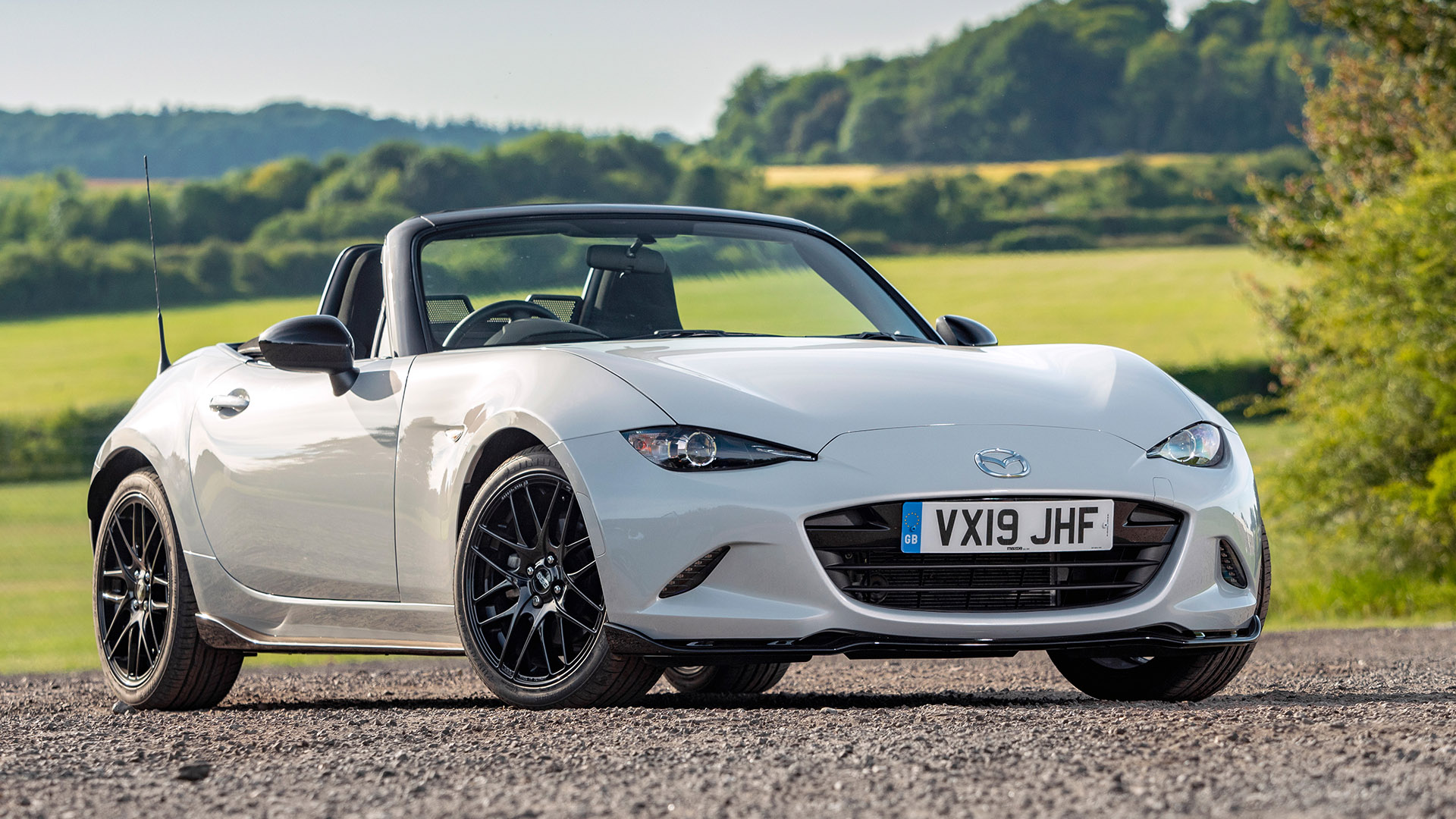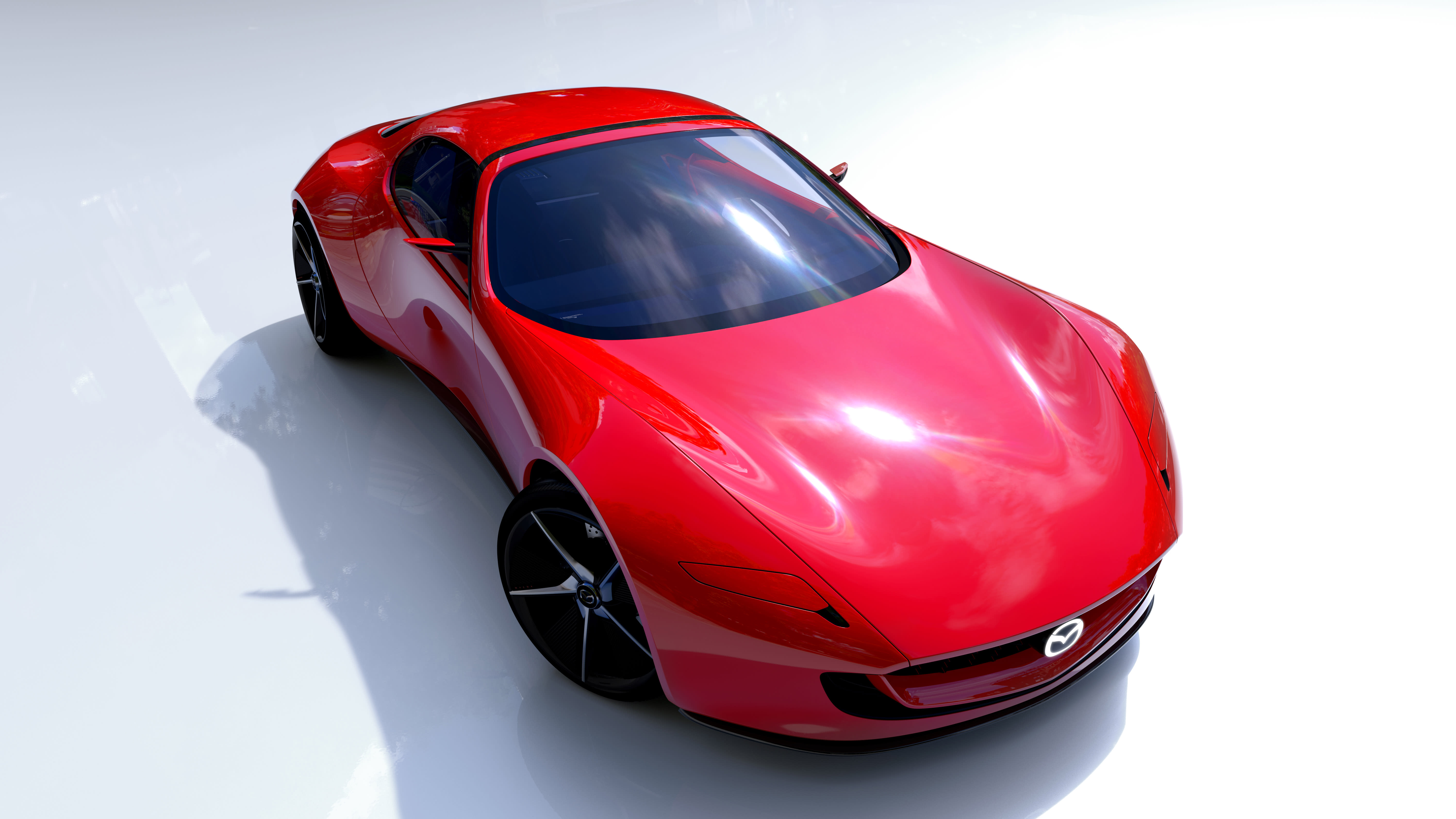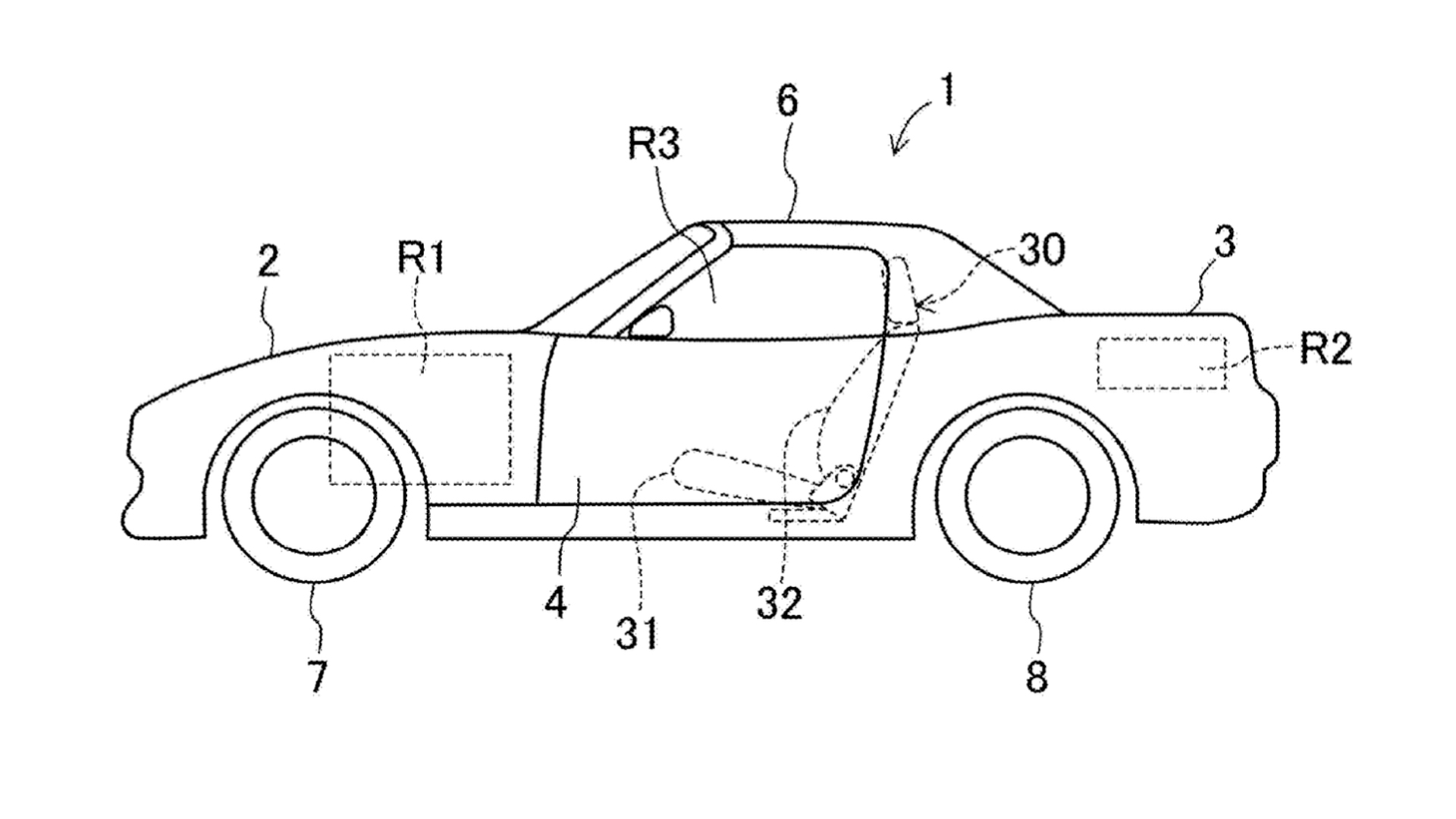I’m a Mazda MX-5 owner and I can’t wait for it to go electric
The next MX-5 will still have an engine. But after that? The tiny sports car is going electric.


QUICK SUMMARY
The next Mx-5 will have an engine, but after that Mazda has plans for an electric successor.
A recently published patent shows what Mazda has planned for an EV sports car, including batteries that move to improve weight distribution and handling.
Mazda is committed to sticking with an engine and manual gearbox for the next generation of its MX-5 sports car. It’s also expected to be just as small and light as the current car, which has now been around for a decade.
This is all good news for MX-5 fans, and lovers of sports cars generally, who have seen their sector of the market deteriorate in the face of electrification. But what about the generation of MX-5 after that? We could be talking another decade from now so, almost inevitably, it’ll be electric.
Evidence of what that car might look like has already arrived. Mazda wowed us all back in 2023 with the Iconic SP Concept (pictured below), revealed at the Japanese Motor Show as a hint of what a future MX-5 could be.
Although only a concept, Mazda said it intended the car to be powered by a hybrid system, comprising a rotary engine running on carbon-neutral fuel – potentially even hydrogen – and an electric motor. Power was a claimed 370 PS and weight was pegged at 1,450 kg, with a perfect 50:50 front-to-rear weight distribution.
That’s a significant upgrade on the current MX-5, which in 2.0-litre form produces a little under 200 PS, although it weighs less than the SP Concept, at about 1,060 kg. In fact, it’s such an upgrade that I reckon the concept is closer to a reborn RX-7 than a next-gen MX-5.

Instead, after the imminent fifth-generation car, it looks like Mazda will stick close to the original recipe, but with a lightweight, full-EV drivetrain.
This assumption is fuelled by a recently published Mazda patent, which shows a sketch of what is unmistakably an MX-5, but with batteries instead of an engine. Filed in October 2024 and published in April 2025, the patent doesn’t specifically mention the MX-5 or Miata (as it’s called in the US), but the accompanying sketches clearly show a two-door, two-seat convertible sports car unlike anything else Mazda makes.
Get all the latest news, reviews, deals and buying guides on gorgeous tech, home and active products from the T3 experts
Titled ‘Electric Automobile’, the document explains how the car could have batteries in the transmission tunnel, as well as behind the seats and ahead of the passenger. This approach differs from the skateboard chassis used by most other EVs, where the batteries are installed in the floor. Locating a future electric MX-5’s batteries in the transmission tunnel keeps the weight central and relatively low, ensuring the seats, dashboard and roof line are especially low – something that’s key to the design, proportions and seating position of a sports car like the MX-5. Mazda’s thinking appears to be, if you put the batteries in the floor, the driver would sit too high.
Even more interesting is how the patent describes a movable battery. Located towards the front of the car, this would be “movable in the left-right direction of the vehicle body” in a bid to keep the car’s weight balanced, even when the passenger seat is empty. In the right-hand-drive UK, this could mean a battery that moves to the left when only the driver is present, or sits centrally when both seats are occupied. The patent also suggests how the battery could be moved forwards and backwards depending on seat position.

There’s no mention of performance statistics, like the size of the battery or power of the motor, but this is enough to get me excited for an electric MX-5. I’ve owned the fourth-generation ND model for four years now and, while I love the car as a complete package, the engine has never been the star of the show. Mazda has improved the characteristics of the engine since my car was built in 2015, but the MX-5 has never been about outright performance, and nor has it had a particularly intoxicating soundtrack.
It’s a car that celebrates low weight and enjoyable handling – and the patent suggests these are the key factors Mazda is focused on for the first electric version too. It’ll no doubt have more power than its petrol predecessor (that’s no longer a surprise from any new EV these days) but hopefully, with some clever engineering and moveable batteries, the MX-5 EV will be just as fun to drive.
So yes, while I will miss the option of driving a new MX-5 with an engine, the prospect of an electric one excites me just as much. It’ll be quicker and more powerful but, so long as Mazda gets its way, it’ll remain small, light and perfectly balanced. A honed driver’s car among hulking SUVs.
Alistair is a freelance automotive and technology journalist. He has bylines on esteemed sites such as the BBC, Forbes, TechRadar, and of best of all, T3, where he covers topics ranging from classic cars and men's lifestyle, to smart home technology, phones, electric cars, autonomy, Swiss watches, and much more besides. He is an experienced journalist, writing news, features, interviews and product reviews. If that didn't make him busy enough, he is also the co-host of the AutoChat podcast.
You must confirm your public display name before commenting
Please logout and then login again, you will then be prompted to enter your display name.
